In one photograph from Justine Kurland’s now-iconic Girl Pictures series, a group of teenagers emerge from under a bridge, holding hands as they triumphantly cross a rocky creek. In another, five girls lounge in a grassy meadow twirling daisies, pulling off a petal at a time. “He loves me… he loves me not,” one might whisper, before deciding the boy isn’t worth her time. A third shows them crouching in an abandoned car, their bags thrown to the side as they plot their next move. The images make you wonder how long the girls have been out in the wilderness, left to their own devices in the fields of Indiana or the foothills of the Appalachian Mountains. Twenty years on and many celebrated exhibitions later, the New York-based photographer’s landmark series lives on in Justine Kurland: Girl Pictures, a photo book featuring her expansive work in its entirety, along with several previously unseen images.
Girl Pictures was originally inspired by a girl named Alyssum, the 15-year-old daughter of Kurland’s then-boyfriend, who was unwillingly sent to live with her father because she was caught skipping school and smoking pot. Kurland was studying in New York City when they met, and the pair spent many “conspiratorial mornings” imagining what Alyssum’s life would be like as a teenage runaway, Kurland tells i-D, surviving out in the world on her own.
“I wanted to run away too,” Kurland said. “I was miserable in my life and she was miserable in hers. There was this idea that there was just someplace else out there that you could get to—the first pictures we made, we went to Port Authority. We made more of the after-school-special, teenage-runaway-movie narrative [images].”
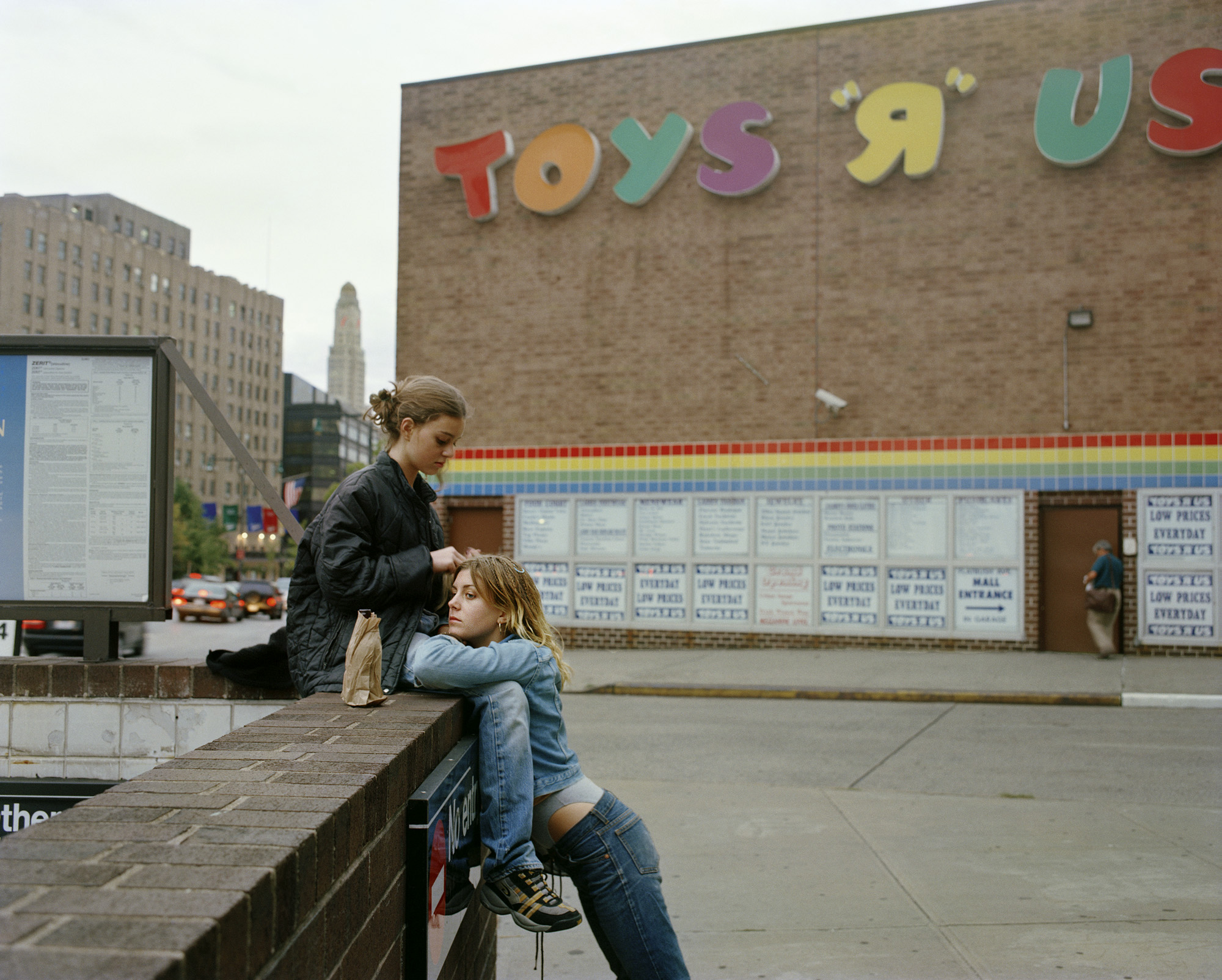
The photos were also inspired by girl bands and leading women in rock music, the idea of being a badass, a punk, an iconoclast—someone who wanted to rebel against the roles that were available to women at the time. Kurland expanded her cast and began photographing groups of girls in and around New York and, later, New Haven, Connecticut, during her MFA at Yale. After completing the program, she decided to become somewhat of a runaway herself, and embark on a few of the journeys she imagined them taking—from crossing the Mississippi to exploring the cliffs along Highway 1.
The photographs in Girl Pictures were taken between 1997 and 2002, in the pre-iPhone, pre-social media era, when young people would hang around outside more—puffing cigarettes by the local diner or killing time in the town square—as opposed to online. Kurland would drive around looking for groups of teenage girls to photograph. She would set the images under overpasses, in liminal spaces that weren’t suburbs or cities, near buildings that were abandoned enough to where the girls could occupy them, and create a kind of sanctuary for themselves.
“My concerns were really about where the narrative unraveled,” she said. “I would basically let the girls just hang out. I was usually even far enough away from them that they would kind of forget that I was there. It was more about letting it unfold or flow in a way that wasn’t quite as directed.”

At the time, the world of contemporary photography was very much fascinated by the idea that a photo could sit somewhere between fact and fiction; there was “a slippage in the idea of what truth meant in a photograph,” Kurland said. What makes her pictures so transcendent is that they are as much a product of the late 90s and early 00s as they are of our current moment. From the fashion—the girls often sport white ribbed tank tops and low-rise jeans—to their resurgence on Instagram moodboards, it’s nearly impossible to put a timestamp on the images themselves. As you flip through the pages of Girl Pictures, the photos become less about the imagined idea of runaways and more about the eternal concept of intimacy, set against bucolic, rolling landscapes.
“It was a very different time 20 years ago, but I think that the pictures are important now because of the ways that they talk about community and togetherness, ideas that transcend the actuality of a teenage girl,” Kurland says. “I think the way that I was actually doing it, traveling, was also about reclaiming history—[subverting] the patriarchal idea of conquest—[in] the landscape and this idea of a bunch of girls nurturing each other.”
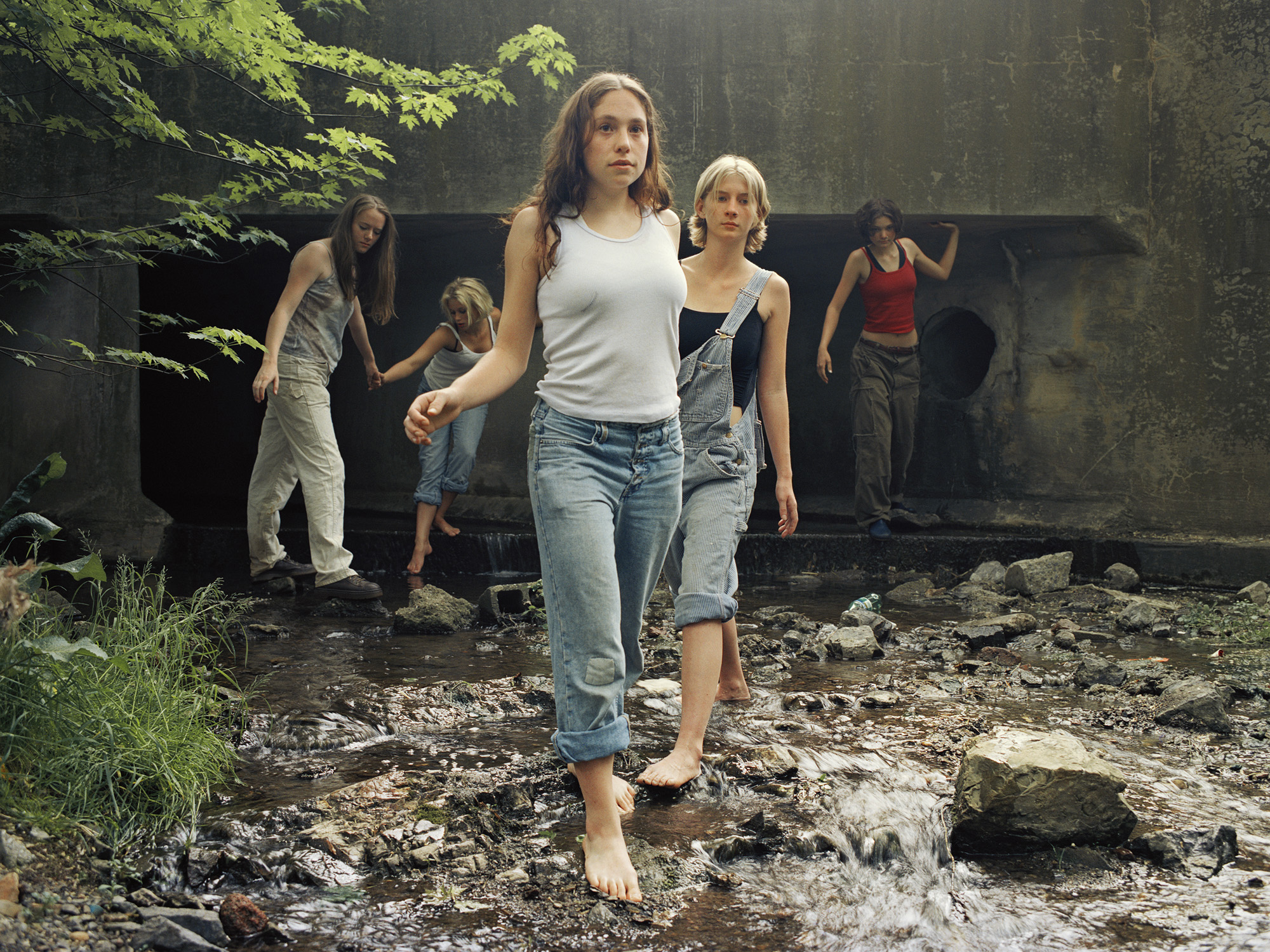
Kurland’s girls are confident, fearless and free. They’ve escaped from their small, industrial towns and the societal constraints that kept them there. In a way, the photos represent a new kind of American dream, one where girls quite literally run the world. Yet their plight is something that we’re still very much in the midst of today. The last time Kurland exhibited the photographs in Girl Pictures, in 2018, Americans sat glued to their televisions watching the Kavanaugh hearings, contemplating at least two more years under a president accused of sexual assault by multiple women, as the #MeToo movement continued to snowball globally.
The patriarchy that enables all of that injustice doesn’t exist in Kurland’s world. Instead, it’s a place comprised of rebellious runaways, armies of girls who defy all obstacles to take charge of their own lives.
“I imagined a world in which acts of solidarity between girls would engender even more girls—they would multiply through the sheer force of togetherness and lay claim to a new territory,” she wrote in the book’s introduction. “Their collective awakening would ignite and spread through suburbs and schoolyards, calling to clusters of girls camped on stoops and the hoods of cars, or aimlessly wandering the neighborhoods where they lived.”
The final photo in Girl Pictures, titled “Forest Fire,” shows a young woman traipsing through the woods, stepping over fallen tree limbs and collapsed branches. A small fire that she hopes to escape burns in the background. Smoke billows in the gaps of the trees still standing.
“That last picture is like a cautionary warning,” Kurland says. “Things are not all dreamy and perfect. There’s still a lot of work to be done.”

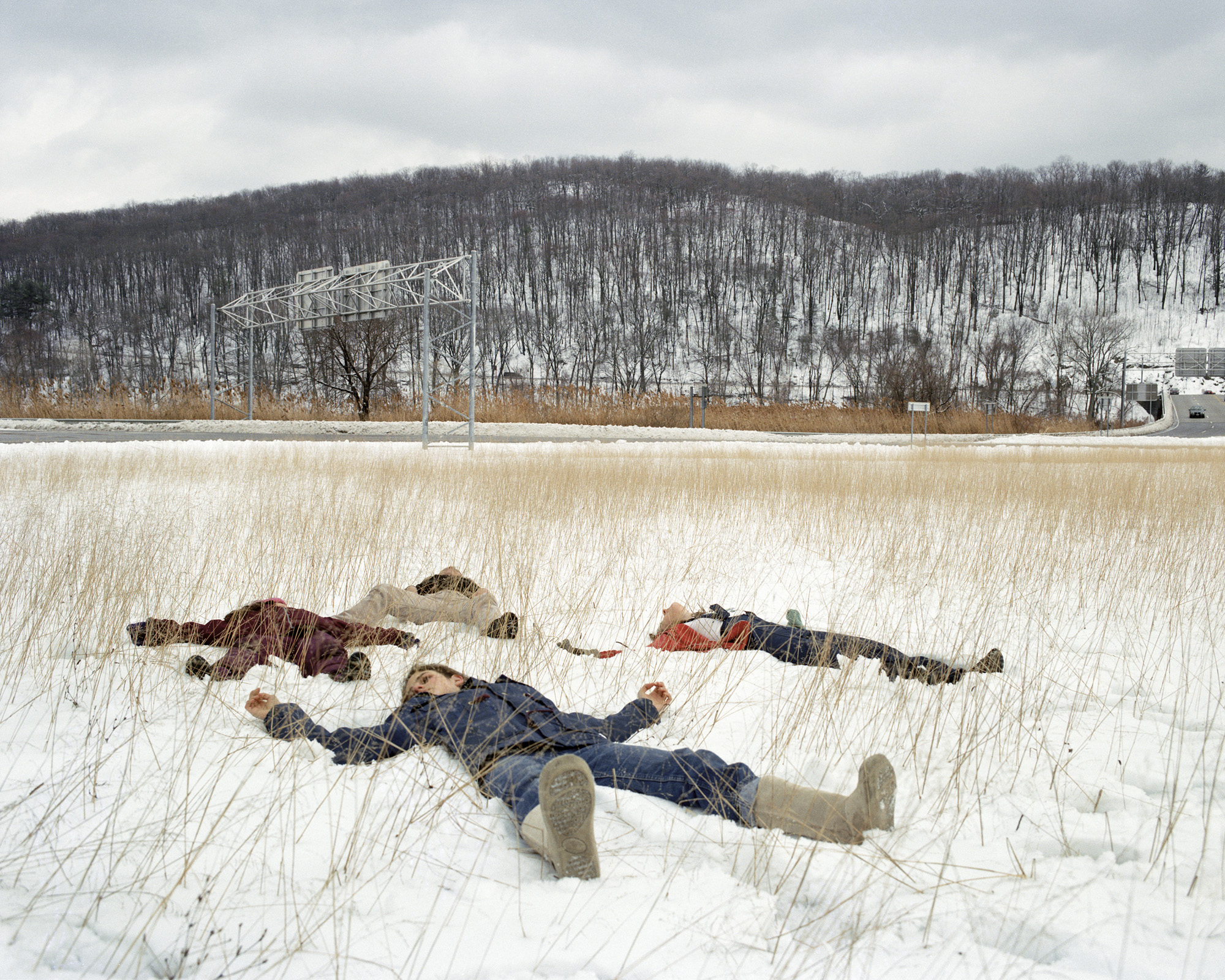
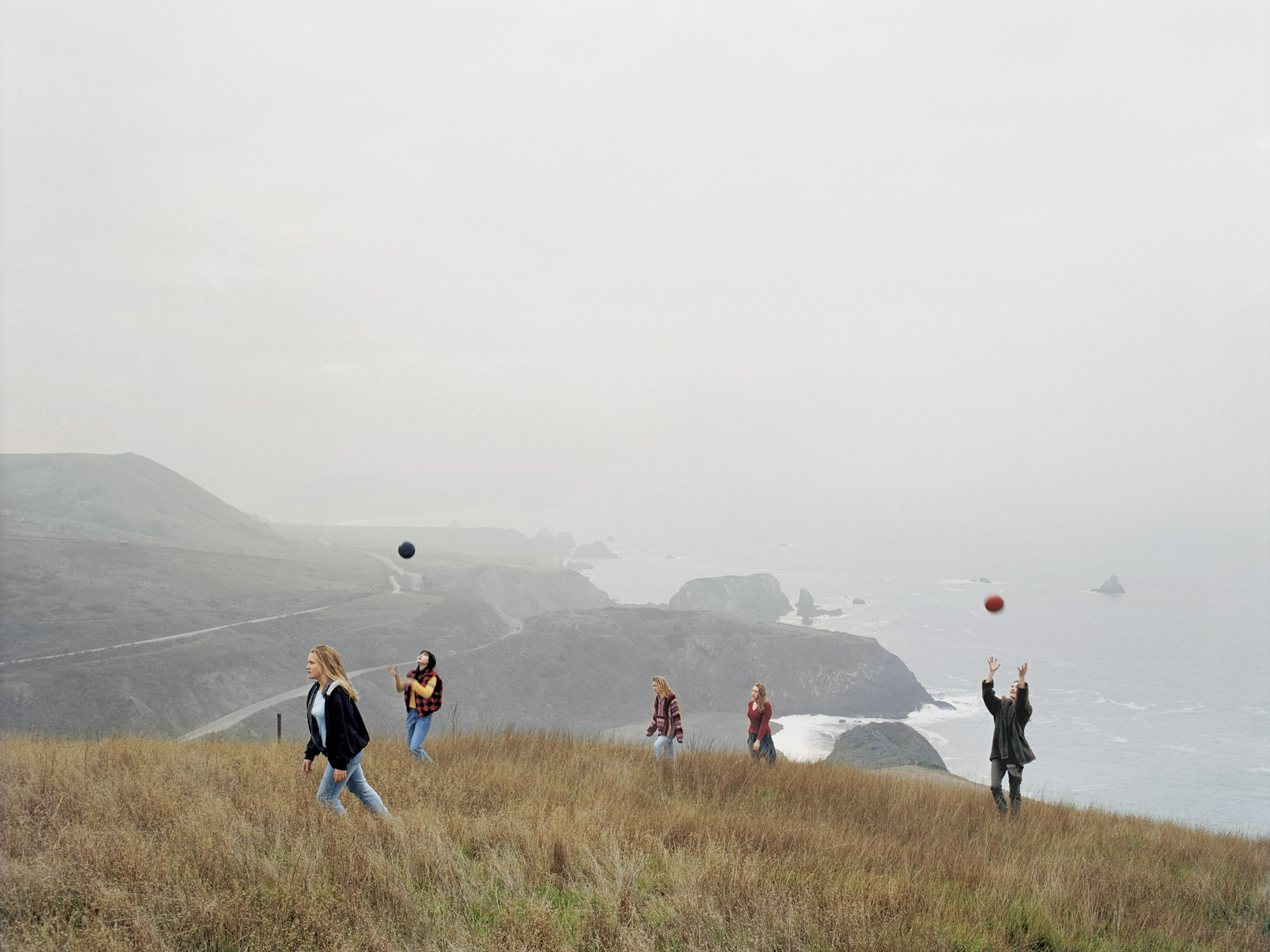
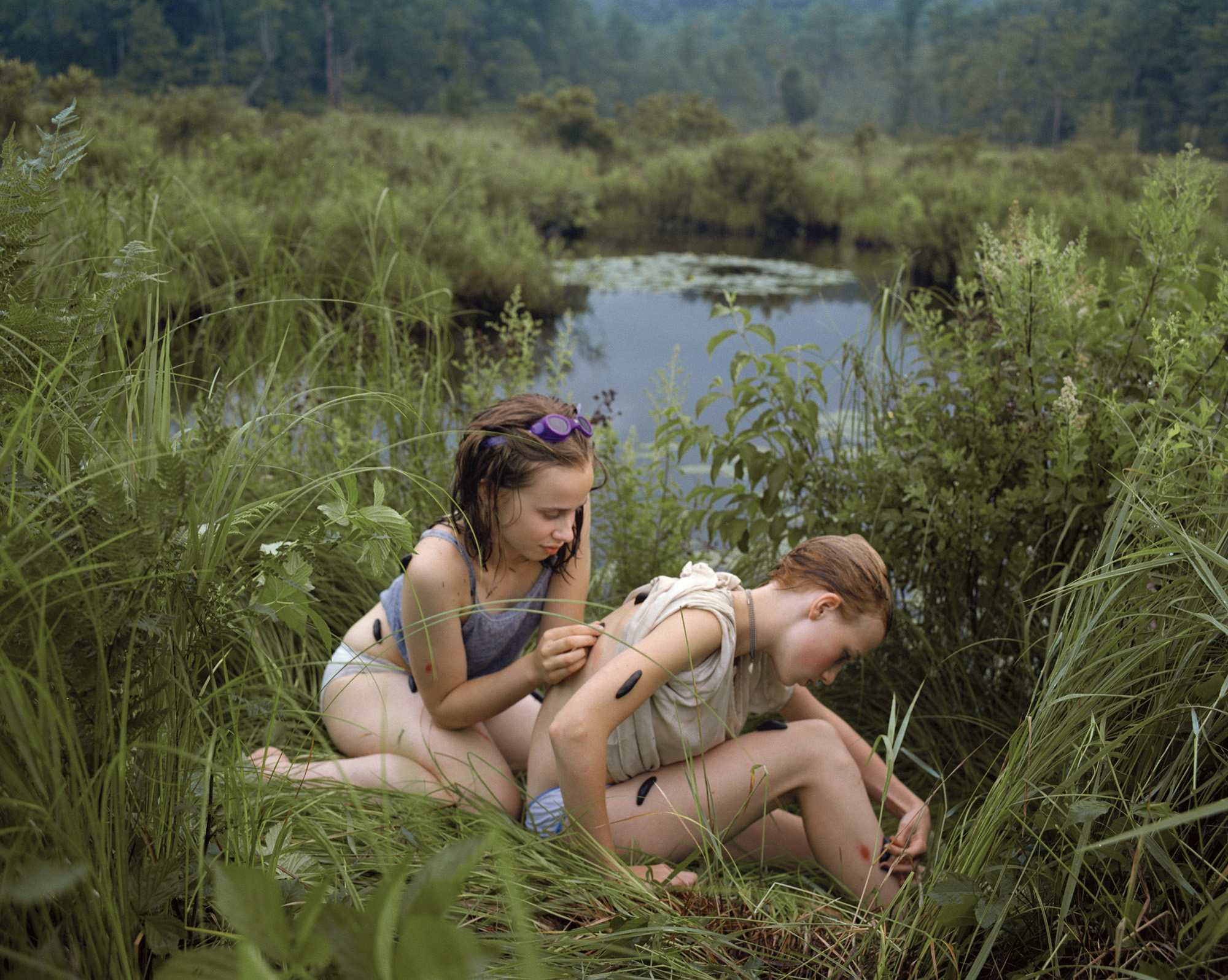


Justine Kurland: Girl Pictures was published by Aperture earlier this year, and is available for purchase here.

